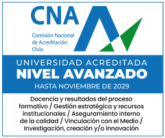Hector Pesenti(a), Ernesto Zumelzu(b), William Gacitua(c), Marcos Torres(d), Jaime Castillo(a), Alejandra Sanchez(a), Matteo Leoni(e) and David Dodoo-Arhin (f)
(a)Escuela de Ingeniería de Procesos Industriales, Facultad de Ingeniería, Universidad Católica de Temuco, Temuco, Chile.
(b)Instituto de Materiales y Procesos Termomecánicos, Universidad Austral de Chile, Valdivia, Chile.
(c)Centro de Biomateriales e Ingeniería, Universidad del BioBío. Concepción, Chile.
(d)Instituto de Bosque y Sociedad, Universidad Austral de Chile, Valdivia, Chile.
(e)Dipartimento di Ingegneria Civile Ambientale e Meccanica, Universitá degli Studi Trento, Trento, Italia.
(f)Department of Materials Science and Engineering, University of Ghana, Legon-Accra, Ghana.
BIORESOURCES
Volumne 13(2) Páginas 2602-2616
DOI: http://10.15376/biores.13.2.2602-2616
Fecha de Publicación: 16 de Febrero de 2018
Abstract
Invasive Teline monspessulana can be an important source of biomass to supply fibers for the rising demand of cellulose bioproducts, especially for the development of advanced materials. Its fibers can be extracted via a thermo-alkaline process at 170 °C with 40 g/L of sodium hydroxide (NaOH) and characterized by crystallographic, thermo-analytical, and mechanical techniques. The cellulose proportion in the wood of this species is approximately 47.6 wt.% ± 1.05 wt.%. However, its fibers are relatively small, and they have a wide range of aspect ratios from 25 to 287, with an average diameter of 9.3 μm ± 2.5 μm. These characteristics and mechanical properties make the fibers unattractive for the textile and paper industries. Meanwhile, crystalline cellulose was prevalent in the monoclinic phase, with a crystalline index and crystalline portion of 78 and 41%, respectively, observing crystal domains of c.a. 3.2 nm. Nanoindentation tests revealed favorable values of elastic modulus and hardness of c.a. 16 GPa and 0.28 GPa, respectively. Thus, this bioresource is expected to see promising applications in materials engineering, such as reinforcement in material composites, in drug delivery carrier, and electronic devices, among other biomultifunctional components.



